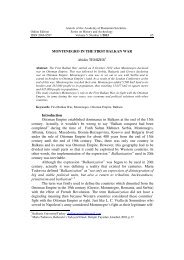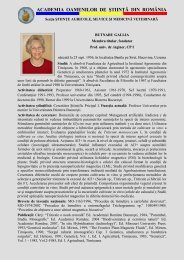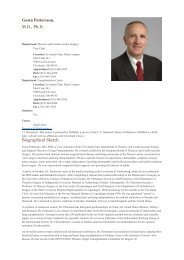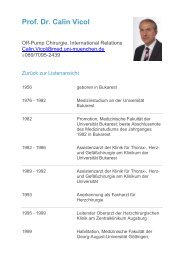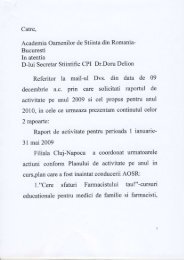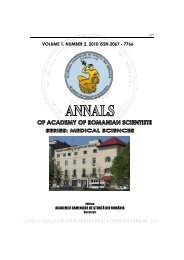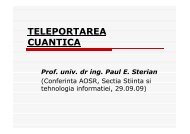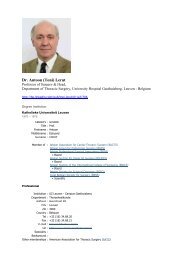Volume 3 nr 1 / 2011 - Academia Oamenilor de Stiinta din Romania
Volume 3 nr 1 / 2011 - Academia Oamenilor de Stiinta din Romania
Volume 3 nr 1 / 2011 - Academia Oamenilor de Stiinta din Romania
- No tags were found...
Create successful ePaper yourself
Turn your PDF publications into a flip-book with our unique Google optimized e-Paper software.
Critical Infrastructures ProtectionA <strong>Romania</strong>n Perspective (Part 1) 113Especially after the dramatic events of 11 th September 2001 in the Unites Statesand 11th of March 2004 in Madrid, but also on 7th July 2005 in London, the risksassociated to terrorist attacks on European infrastructures rose. The consequencesof such attacks are consi<strong>de</strong>red to be variable.It is being estimated that a cyber-attack would make few or no human victims asdirect consequence, but could lead to the interruption of the functioning of the vitalinfrastructures. For example, a cyber-attack against the transmission networkswould lead to the interruption of telephonic conversations, data transmissions,television and radio. Until the damage will be recovered, serious consequences canoccur as a result the chain-like propagation of unpredictable events due to the socialimpact caused especially through the psychological effect on the population and themajor effects on the governing act on local and state level.There is however also another perspective regar<strong>din</strong>g the attacks on the criticalinfrastructures. An attack on the command-and-control systems of chemicalinstallations or of the transport and distribution networks for electrical energy, gasand oil products could cause many victims and significant material damage. Evenmore, due to the inter<strong>de</strong>pen<strong>de</strong>nce of interconnected systems, the effects couldmultiply and unfold in a chain reaction.An attack on the electricity networks could have very big effects, both in terms ofthe functioning of industrial installations, computer networks, banking sector,communication networks etc. but - where there are no own electric energy sources- also on the vital medical equipment used for the patients un<strong>de</strong>rgoing surgery orun<strong>de</strong>r monitored control.Long lasting electricity interruptions in large areas in North America and Europepointed once again that infrastructures in the field of energy are especially criticaland vulnerable.Accor<strong>din</strong>g to <strong>de</strong>finition mentioned by “The Council Directive 2008/114/EC of 8December 2008 on the i<strong>de</strong>ntification and <strong>de</strong>signation of European criticalinfrastructures and the assessment of the need to improve their protection”,Critical Infrastructures are: “an asset, system or part thereof located in MemberStates which is essential for the maintenance of vital societal functions, health,safety, security, economic or social well-being of people, and the disruption or<strong>de</strong>struction of which would have a significant impact in a Member State as aresult of the failure to maintain those functions.”The same document, <strong>de</strong>fine "European critical infrastructure" or "ECI" as criticalinfrastructure located in Member States the disruption or <strong>de</strong>struction of whichwould have a significant impact on at least two Member States. The significanceof the impact shall be assessed in terms of cross-cutting criteria. This inclu<strong>de</strong>seffects resulting from cross-sector <strong>de</strong>pen<strong>de</strong>ncies on other types of infrastructure.Copyright © Editura Aca<strong>de</strong>miei <strong>Oamenilor</strong> <strong>de</strong> Știință <strong>din</strong> România, <strong>2011</strong>Watermark Protected



